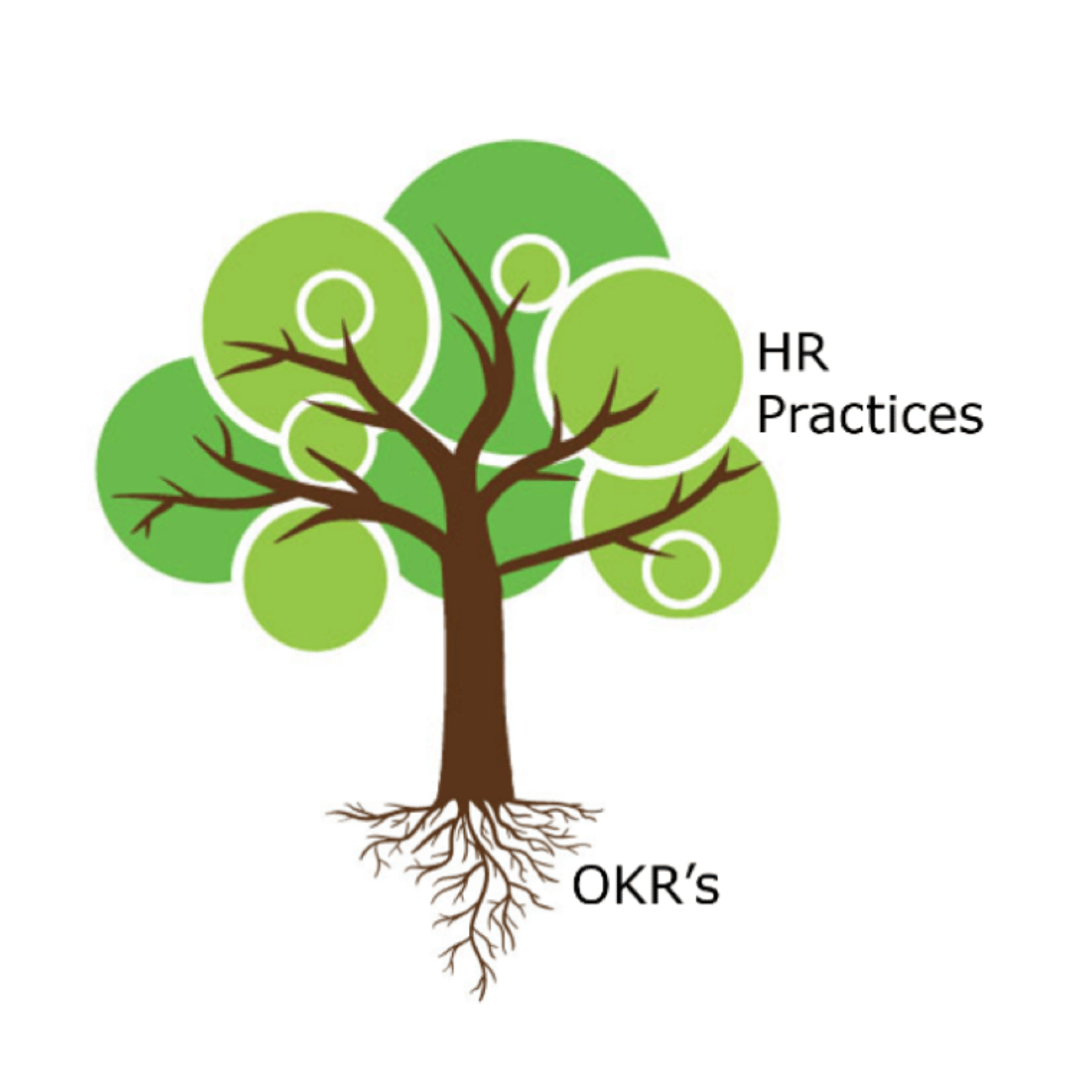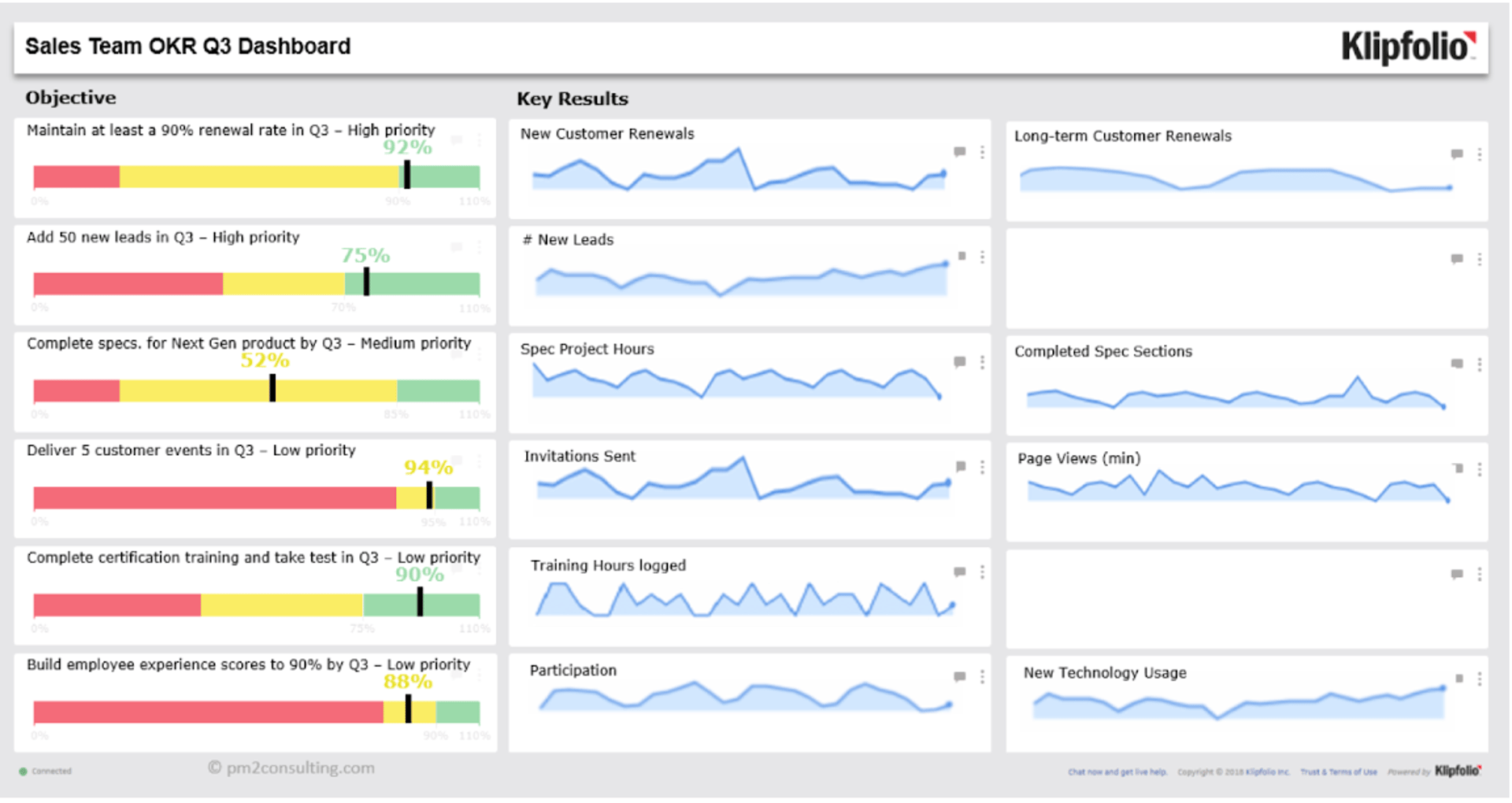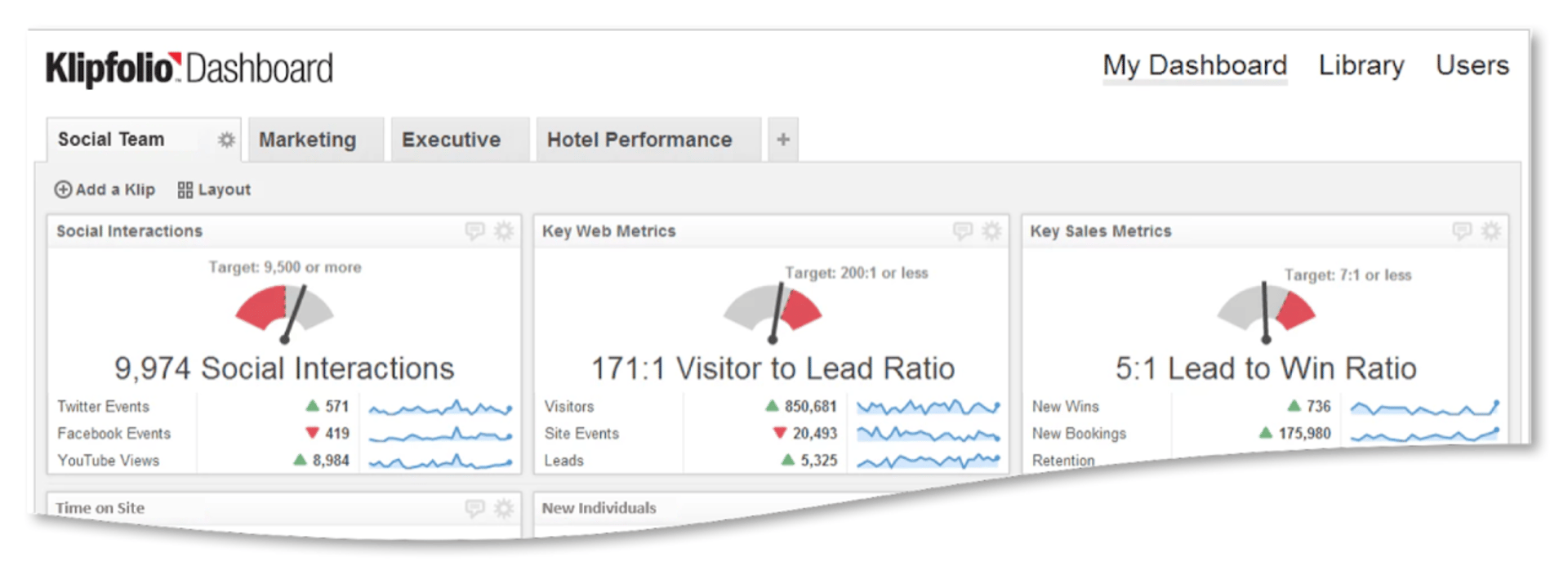Get the HR into OKRs

Published 2024-06-15
Summary - OKR solutions need technical factors and social factors to be successful. The social factor needs to be enabled by dashboards for accurate feedback.
Executive Summary
Objectives and Key Result (OKR) solutions need a combination of technical factors (procedures, dashboards) and social factors (practices – what we do) to be successful. The social factor, practices, needs to be enabled by HR dashboards that give accurate feedback quickly in order to encourage the right behaviors.
OKR Success Takes More Than Just OKRs
Some might mistakenly think that OKRs are just about the Objectives and Key Results - in other words, the hard facts. Although getting the facts right is super critical, your OKR and strategic success is all about how the organization uses those facts to drive better performance.
My tree metaphor can help explain this story.
Think of the OKRs as the roots that anchor and nurture the tree. Now, think of HR practices as the rest of the tree (trunk, branches, and foliage), the larger parts of the tree you can physically see.

Having strong roots is critical – otherwise the tree either dies or falls over, but it is the rest of the tree that gives it life. On the flip side, we have to build the top part of our tree to gather the light, attract the bees, and become an ecosystem for the birds.
Okay, maybe I’m taking this metaphor too far…
A Focus On HR Practices
This article is all about the above-ground part of the metaphor – the HR practices.
To learn more about the roots (OKRs), check out my previous article Get the HR out of OKRs.
If you didn’t like my tree metaphor, you could use my car metaphor (which I used in the previous article) – the dashboard is the OKRs and the driver (and all of their soft skills) are the HR practices. In any case the story is the same – there is enabling frameworks and then comes the tough part – the soft skills.
The second part to understand, is that we need to make sure the HR practices create the right behaviors. Successful OKR sites have a culture and values that make performance conversations risk-free, positive and supportive. These behaviors become the culture. To ensure those behaviors always occur and in a consistent way, we need to provide explicit tools, like dashboards, that encourage the right behaviors, no different than the dials on your car dashboard are to enable you to make the right decisions.
The Role of HR in OKRs
The Human Resources department (HR) is an interesting paradox because they develop procedures and practices that everyone else in the organization follows. I.e. the HR function design practices, such as annual performance reviews, that other people have to effectively perform.
The processes that HR enables and are key to OKR success include:
- Peer feedback
- Recognition
- Coaching
- Skills development
- Career development
- Performance reviews
We need to design our OKR dashboards to enable all of these conversations… but employee needs are changing, and therefore what HR needs to provide is also changing.
According to Deloitte:
- The redesign of performance management is accelerating as organizations rethink their processes, including eliminating ratings and focusing more on coaching, feedback and agile goal management. Our OKR dashboards need to support agile goal management and enable appropriate coaching.
- Performance and rewards are being decoupled to combat biases and skewed ratings. Instead, salary adjustments are being made based on impact, market position, and teamwork. Our OKR dashboards need to provide accurate, auditable facts that underpin effective reward systems.
- Organizations are maximizing the impact of goal setting by increasing frequency, requiring OKR dashboards that are in real-time.
- Ongoing coaching and feedback throughout the year is on the rise, as organizations transition away from annual cadences. Companies are increasing alignment to business strategy by connecting performance objectives for individuals at all levels. The OKR dashboards need to be both linked to the organization’s strategic priorities and be available at any time, anywhere.
- Team performance is viewed as more important than individual performance, based on research that shows team objectives drive greater collaboration and performance. Our OKR dashboards need to be able to aggregate up / cascade down to accurately show performance at any level.
What HR dashboards need to contribute
Goal Setting
What is your organization’s process for setting and revising goals, and making them transparent? Leading organizations set goals quarterly and update them frequently, encouraging vertical and horizontal alignment. These organizations provide visibility into goals for all employees, at all levels across the organization.
This includes collaborative goal-setting among managers and associates, active goals tracking through the help of a tools such as OKR Dashboards, and revision of goals to reflect changes in company objectives.
In this dashboard conversation, managers and employees jointly discuss and set the employee’s goals and priorities for the period. When goals are jointly created there is increased accountability and buy-in. Best practice is, at least, quarterly review of progress to goals with an eye towards using these results to create the next periods goals.
Career Development
This is a critical conversation that, too often, gets deprioritized in the face of pressing business priorities. Best practice is to include at least one career development goal in every employee’s quarterly OKR goal setting cycle to ensure proper focus. Instead of discussing development planning only once per year in a formal setting, managers and employees must openly discuss plans and desires for the future during check-ins. Managers should aim to collaborate with employees in constructing development plans that leverage their strengths, and through regular, ongoing feedback, employees can discuss which opportunities they’re interested in for the future.
Performance Review
While regular goal-setting and continuous feedback through OKR dashboards is necessary to maximize employee motivation, a formal performance review is typically needed for talent review and compensation discussions. Managers are better able to complete these periodic reviews because of the continuous conversation with employees throughout the year. However, if you are going to still hold some type of review, it’s best done on a quarterly or even six-month schedule versus the annual review.
Keep in mind the following points:
- The world does not operate on an annual schedule for anything anymore – so your performance dashboards need to follow the pace of business
- Annual reviews can be time-consuming to prepare for
- You’re better able to track and measure goal execution by dashboarding checking in more frequently
- Formal annual reviews still encourage judgmental, subjective appraisals instead of objective feedback that facilitates improved performance and development of strengths
- Formal reviews should extensively use the same dashboards that you use for your ongoing check-ins
Ongoing Progress Updates
Managers and employees need to regularly engage on progress toward the jointly established goals. Ideally on at least a weekly basis, they need to celebrate milestones accomplished and uncover any obstacles or dependencies preventing further progress. Your OKR dashboards need to capture both these agreements (as targets) and actual performance.
Two-Way Feedback
It is important that manager-to-employee coaching and feedback be shared in a timely manner to allow the employee opportunity to improve. These conversations should also include the opportunity for the employee to provide feedback to the manager with the goal of improving their working relationship.
Leading organizations have adopted conversation based coaching models that utilizes multiple sources of feedback (including peers, team members and upward feedback) and information on performance to hold data-driven conversations. Your OKR dashboards should bring these information sources into a single view.
Praise and Recognition
Another component that depends on ongoing feedback is praise and recognition, both being essential in keeping employees engaged and laser-focused on completing objectives. By acknowledging associates’ recent wins (big or small), managers effectively communicate that their contributions matter to the success of the organization overall.
Train Managers
Your managers are already busy. Asking them to start providing real-time feedback to each of their associates on an ongoing basis without any tools would be impossible. Training becomes critical – how do you create great OKRs? How do you report targets and progress? How do you enable the right conversations? A structured approach ensures that both the OKR dashboards and conversations work in tandem to drive better performance.
So, what does this look like?

This is a simple OKR dashboard we produced for a client that already had healthy HR practices – they just needed a dashboard to capture the Departmental, Team and Individual performances.
Shortly, we will create a post with examples that provide some of the HR functionality.

In this case we had multiple Key Result Categories and multiple Key Result Metrics within each category. Now, this is not what John Doerr would recommend… but it is what we often see in the real world!
The next step is to begin capturing some of those conversations on your team’s dashboard. That’s pretty straight forward – our clients either create a simple process with Google Sheets or leverage existing tools like Jira, Salesforce or Slack where those comments are captured in their environment.
Read Get the HR out of OKRs next.
About Pm2
Brett is an Executive Partner at Pm2 (Performance Measurement & Management) an international consulting firm specializing in the development and implementation of strategic dashboards and scorecards. The frameworks they use includes OKRs (Objective and Key Results), Balanced Scorecard, 4DX (Four Disciplines of Execution) Lean, Six-Sigma, etc. Their work has been profiled in Harvard Business Review, Fortune and Forbes magazines as well as countless business books and periodicals. We are pleased to have this thought leader as an active contributor to our blog posts.
Related Articles

12 Important Sales Enablement Metrics You Shouldn't Miss
By Grace Lau — September 19th, 2025
What you should measure in employee performance reviews
By Matt Shealy — February 3rd, 2020
Implementing OKRs, faster, cheaper, better – and easier
By Brett Knowles — December 9th, 2019

